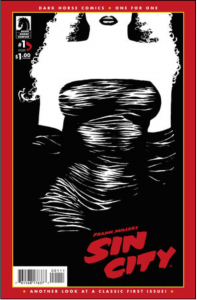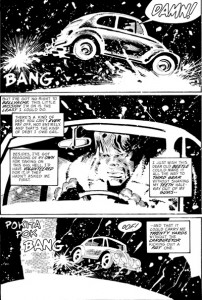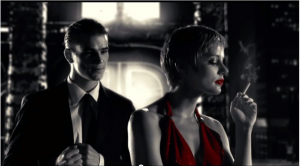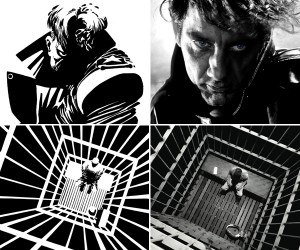We have divided the jobs for our Connor project into what suits our best strengths.
Diary – the diary will be maintained by Tiana is she enters in writings, pictures, and maybe other physical things to help construct an idea of Connor and what he is really like under the surface. We will be taking inspiration from Elliot Rodger’s manifesto titled ‘My Twisted World’.
Photo album – I have been put in charged of organising how and when we will be taking the photos for the party at which Connor executes his murders. I have been thinking about the best way to handle this artefact, as staging a party could be quite cheesy. Perhaps we will hijack an upcoming 21st? I’ll keep brainstorming ideas.
Webisodes – we have decided to scrap the webisodes as we have decided that the vlogs will be enough media material.
Vlogs – this will be Tom’s opportunity to act as Connor and perform the character for audiences to watch. These vlogs need to start being made as we need to start uploading them, as YouTube doesn’t allow backdating of videos and progressive timing for the narrative is very important. Mia is writing out prompts for the vlog for Tom to work off and build on with his own interpretation.
News article – In order for us not to have to re-enact the murders or stage them in any way, the gruesome details will be covered by a newspaper article. James will be organising how the article will be distributed and what it will say.
So far progress appears to be moving along quite nicely. We have developed somewhat of a character map around Connor which will act as a magna carta for all of our artefacts. It is important that we are working off the same character building blocks, or else our artefacts will appear to be extremely segregated and there will be a loss in flow.
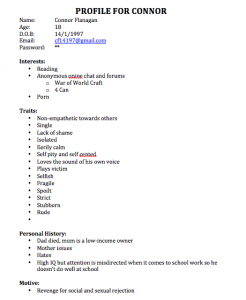 The biggest thing I’m struggling with in making Connors profile is trying to make him original. It seems like we have a tendency to associate certain things with a murdering character (“oh, he’s into World of War Craft and porn – definitely an antisocial, introverted, weirdo”). I want us to make an original character, but its also hard, because we aren’t killers ourselves, and we don’t really have the same experiences that our character is going through hence this goes against one of the statements made in Stanton’s TED talk earlier this semester: “write about what you know”. We’re trying to make this character believable, but I’m concerned that we might over do it with the cliches. Here’s hoping we don’t!
The biggest thing I’m struggling with in making Connors profile is trying to make him original. It seems like we have a tendency to associate certain things with a murdering character (“oh, he’s into World of War Craft and porn – definitely an antisocial, introverted, weirdo”). I want us to make an original character, but its also hard, because we aren’t killers ourselves, and we don’t really have the same experiences that our character is going through hence this goes against one of the statements made in Stanton’s TED talk earlier this semester: “write about what you know”. We’re trying to make this character believable, but I’m concerned that we might over do it with the cliches. Here’s hoping we don’t!


